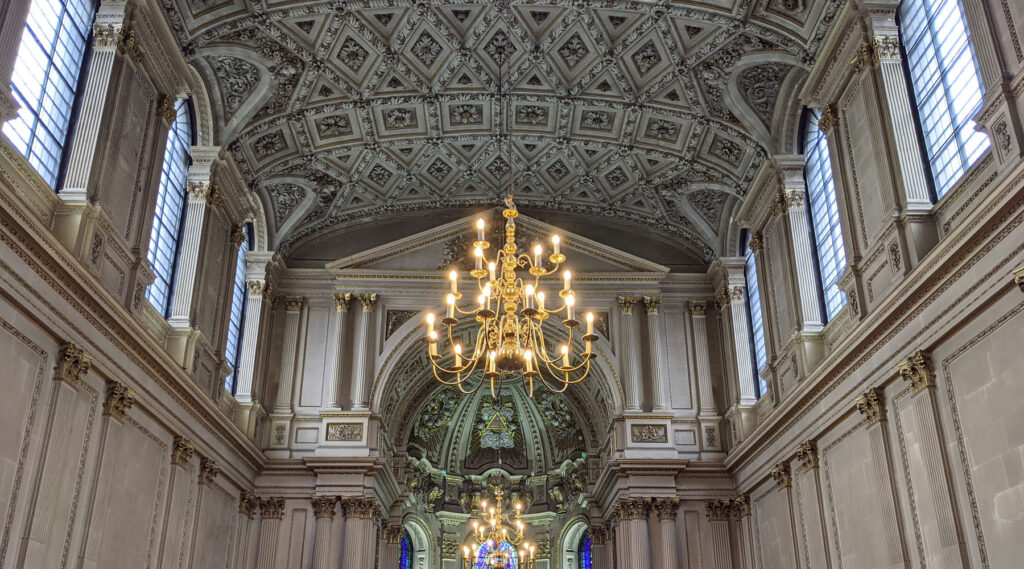Sitting in the middle of the road outside Somerset House on Strand is a grand church with a tall steeple it shouldn’t have. This is St Mary le Strand, the second church of the name in the area – the original one being recorded as existing in 1222, so next year is its 800th anniversary.
Not this specific church though, as the original was slightly to the south, and demolished in 1549 to make space for Somerset House, and the current church dates to 1714-17.
The current church was one of the new churches built in London under the Commission for Building Fifty New Churches, although in the end it only built twelve new churches.
It was a controversial design though, being in the middle of the road, so has always suffered from noise problems inside, and annoying road traffic outside, and the ornate decoration outside was not approved of at the time. The ornate decoration also resulted in a death when an urn fell off the top and killed a pedestrian.
However, it’s the steeple that caused the most problems, as the church wasn’t designed to have one.
There were plans for a monument to Queen Anne to stand outside, and the stone was brought and being prepared for working on when the Queen died. That caused a change in plans, and the architect, James Gibbs was ordered to reused the stone to build a steeple instead, against his wishes.
That said, it’s a very fine steeple and the church would look a lot less impressive without it. It’s arguable that the steeple saved the church, as there was an attempt to demolish it during the widening of Strand in the early 20th century, but a campaign managed to save it. Had it been a less ornate church with no steeple, would it have secured so much support to be saved?
Today it’s nicknamed the Jewel in the Strand, and with its richly ornate decoration in an area dominated by post-war buildings, it’s easy to see how it got the nickname. There’s a small garden entrance, leading up to the church, and inside, you can’t help but look up at the ceiling.
The plastered ceiling is in white and gold and inspired by Luigi Fontana’s work in the church of Santi Apostoli and Pietro da Cortona’s Santi Luca e Martina, both in Rome.
A rich dome sits above the altar, and both are lifted upward by the stern, almost austere walls. There’s an unproven theory that the walls were intended to be painted with frescos, but I think they look better plain. The high windows are deliberate to reduce noise from the outside. It’s also a slightly unusual church in that it doesn’t have an upper gallery of dark wood as many of this era would have had, so it feels bigger and lighter than many of its contemporaries.
Inside, some of the notable features includes the original 1721 pulpit, which is considered rather plain for a baroque church, but they ran out of money and couldn’t afford the one they wanted.
The church is also shared between its Anglican use, and the Romanian Orthodox Church, who moved in a few years ago and have decorated around the edges with the sort of Icons that would have caused so much angst to the Puritans.
The church is about to get some attention soon. It has spent most of its life sitting in the middle of the road in a religious roundabout, but this part of Strand has been pedestrianised recently. That transforms the church from an isolated mote in the middle of a busy road into the heart of a pedestrian plaza.
Apart from a general clean up of the pollution damaged stonework, they will be adding step-free access to the church, and they hope to raise enough to also adapt the crypt under the church to create more space for events.
The church is currently open to visit during the week – details here.










